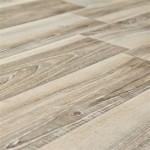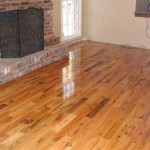## Stick Down Vinyl Plank Flooring: A Comprehensive Guide to Its Essential Features
Stick down vinyl plank flooring has emerged as a popular and versatile flooring solution for both residential and commercial spaces. Its resilience, durability, and ease of installation have made it a favorite among flooring experts and homeowners alike. This comprehensive guide delves into the essential aspects of stick down vinyl plank flooring, providing you with the knowledge you need to make an informed decision for your flooring project.
## Composition and ConstructionStick down vinyl plank flooring is typically composed of multiple layers. The top layer, known as the wear layer, provides protection against scratches, stains, and fading. Beneath the wear layer lies the printed vinyl layer, which offers the realistic wood or stone look. The core layer, often made from PVC or WPC (wood plastic composite), provides stability and dimensional stability. Finally, the bottom layer acts as a moisture barrier and acoustic underlayment.
## Installation ProcessStick down vinyl plank flooring requires professional installation to ensure a secure and lasting bond. The subfloor must be properly prepared, flat, and dry before the planks are laid. Adhesive is applied to the subfloor, and the planks are pressed into place one by one. This meticulous process ensures a tight fit and prevents any gaps or shifting over time.
## Advantages and BenefitsStick down vinyl plank flooring offers numerous advantages that make it a compelling choice for many applications:
- Durability: Stick down vinyl planks are highly resistant to wear, scratches, and moisture, making them ideal for high-traffic areas and spill-prone locations.
- Water Resistance: Vinyl is naturally waterproof, making it suitable for bathrooms, kitchens, and basements where water exposure is likely.
- Comfort: The core layer provides a slight cushion, resulting in a more comfortable surface to walk or stand on compared to hard flooring materials.
- Variety of Designs: Stick down vinyl planks come in a wide range of colors, textures, and patterns, mimicking the look of natural wood, stone, or ceramic tiles.
- Easy Maintenance: Vinyl flooring is incredibly easy to clean. Regular sweeping or vacuuming and occasional damp mopping is all that is required to maintain its appearance.
While stick down vinyl plank flooring offers many advantages, a few considerations should be taken into account:
- Professional Installation: Unlike click-lock vinyl planks, stick down vinyl planks require professional installation to ensure proper adhesion.
- Subfloor Preparation: The subfloor must be smooth and level to prevent uneven installation.
- Remodeling: Removing stick down vinyl planks can be time-consuming and may damage the subfloor if not done carefully.
Stick down vinyl plank flooring is a versatile and durable flooring option that offers a range of benefits. Its resistance to wear, water, and stains, along with its comfortable surface and easy maintenance, make it a suitable choice for a variety of applications. By considering the essential aspects discussed in this guide, you can make an informed decision about whether stick down vinyl plank flooring is the right choice for your flooring needs.

Floating Vinyl Plank Flooring Vs Glue Down 99cent Floor

Post Nbl Express Eco Flooring

Glue Down Vinyl Flooring Lifestepp

Glue Down Vs Floating Lvp Which Is Better Whole Cabinet Supply

Deco S Colors Glue Down Floor And Wall Diy Mambo Wood Aged 6 In X 36 Multi Tonal Luxury Vinyl Plank 30 Sq Ft Case Cms2 The Home Depot

Does Vinyl Flooring Need To Be Glued Down Thediyplan

Lean About Everlife Glue Down And Plank Flooring

Deco S Colors Glue Down Floor And Wall Diy Samba Wood Aged 6 In X 36 Multi Tonal Luxury Vinyl Plank 30 Sq Ft Case Cms1 The Home Depot

Luxury Vinyl Flooring Vs Glue Direct Wood

Glue Down Vinyl Plank Flooring Ivanees Wen Lighting
Related Posts








